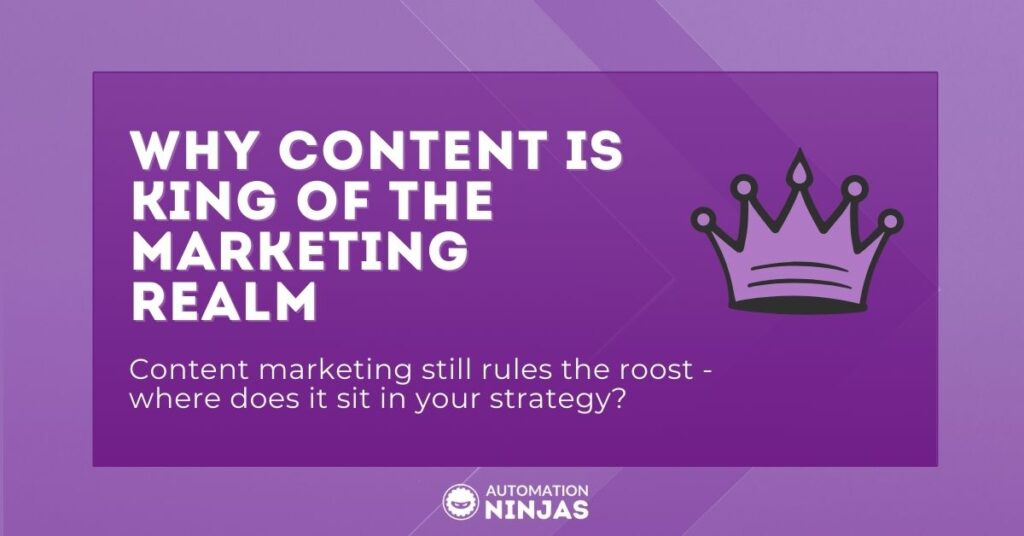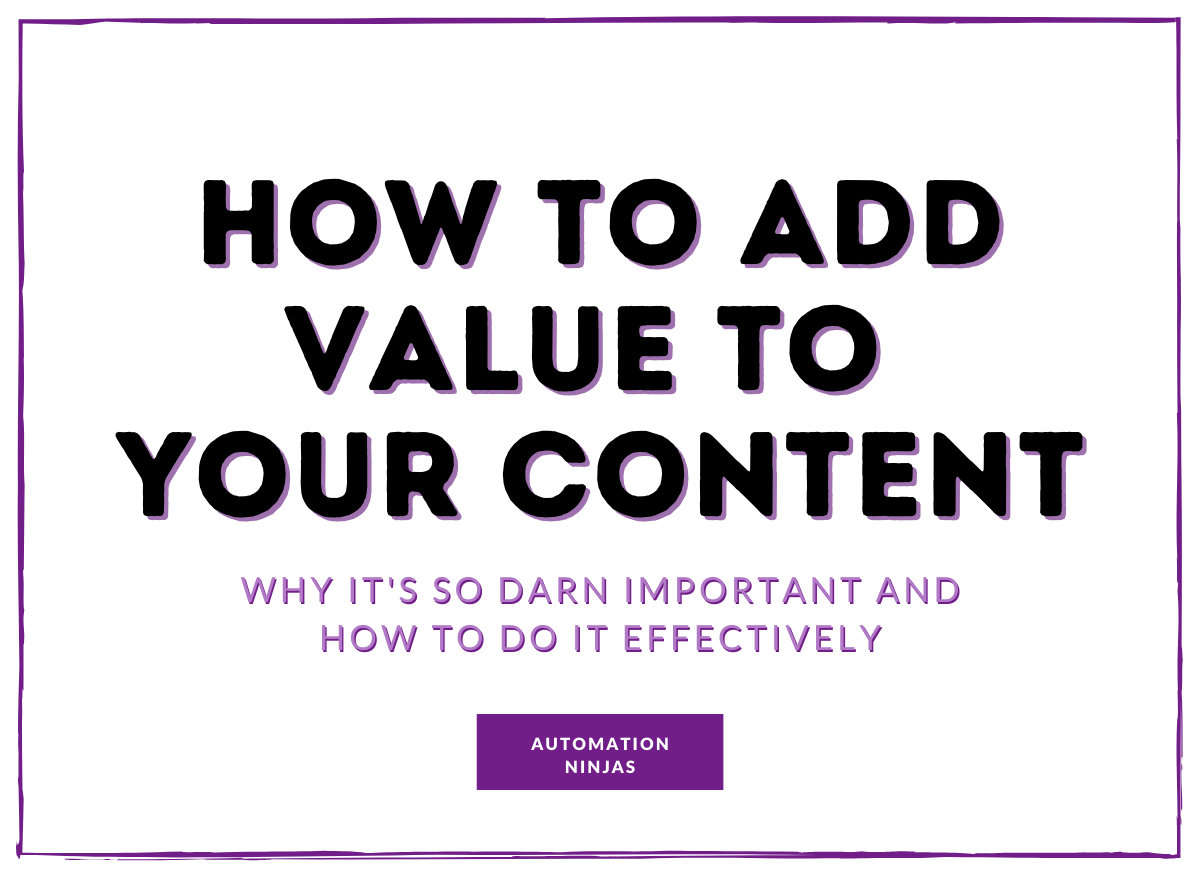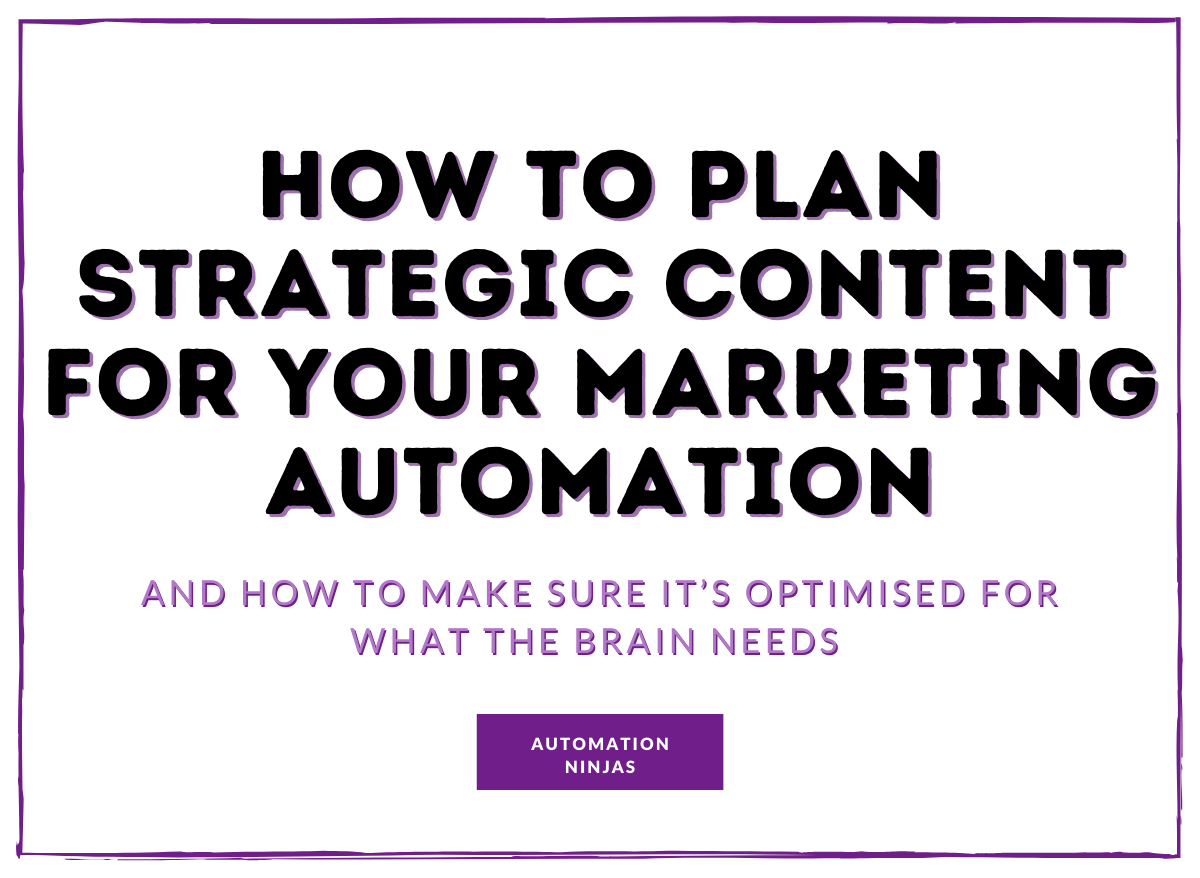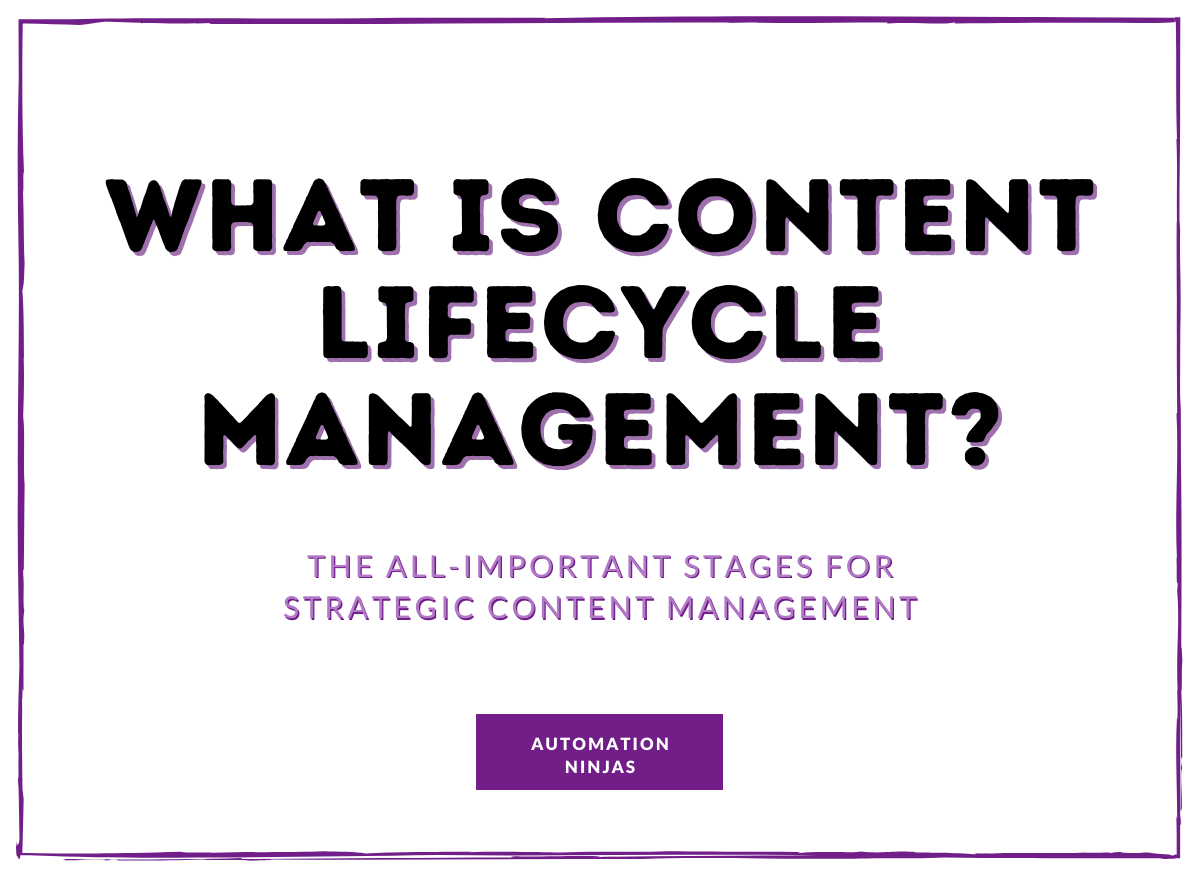Author: Ashton Oldham
Hey there, I'm Ashton, the Content Ninja with a penchant for creativity! I'm all about crafting killer customer-focused content and sprinkling it with that special sauce that makes brands pop. Teaching, strategising, organising (people and projects), and spicing up collaborations? That's my jam!
Many have argued that blogging and content marketing have “had their day”. Many are wrong. Content is King - and it will remain so for a long time to come.
I could leave it there and hope you simply trust my word. But we don’t know each other, and trust has to be built, right? So, I am going to argue my case in this blog (and that of all content creators).
However, it’s not just going to be me harping on about the glory of great content; I’m also going to leave you with some top tips. Education + Action. Those two are powerful things together, and if you are willing, they will impact your content marketing strategy beautifully.
Before we dive headfirst into the swirling miasma of content marketing, we first need to understand what went on behind the scenes at Google to suddenly makes all this web page copywriting and blogging lark so terribly important…
Google’s Impact on Content Marketing
Some years ago, if you wanted to appear at the top of Google, PPC was hands down your best bet. At the time, it was still relatively cheap, and with the search results creaking beneath the weight of ad real estate – ads at the top of the page and in the margin – global domination awaited you, providing you were willing to hose enough money at your chosen keywords.
However, the more people hopping on that bandwagon, the harder it was to get a shoo-in. Small businesses with less budget had next to no chance of competing for the top spot when the big dogs were securing AdWords with their big bills.
Fortunately, Google evolved, and well-optimised content pages became the most important thing. AdWords was (and still is) important, but what you said on your website became the most important element. At least in theory.
It took all of five minutes for digital marketers to spot the obvious flaw – you could game the Google algorithm.
Through lots of little sneaky tricks – including white text on a white background and repeating keywords dozens of times per page – the gurus of the early noughties could trick Google into thinking websites were far more useful than they were.
One of the more ethically dubious tricks was to hide long lists of pornographic references on the page so businesses would show up more frequently in search results.
Shock Horror!
Yet, there were two problems.
1. Google doesn’t like being beaten at their own game.
2. Google has never been known to rest on their laurels.
The Game Changer
Semantic search made a lot of digital marketers very nervous (read terrified – just what the hell is semantic search anyway?!). Up to then, they have been making a killing by pulling every dirty trick under the sun to get their clients to the top of Google and now none of it would work. If anything, most of their clients were about to crash through the rankings and lose a lot of money in the process.
What’s that saying about cheaters and prospering?

The reason for this sundering of search performance was an incredible technological achievement by Google and a master stroke in terms of completely changing how the entire world advertised their business online.
Ranking in Google came down to content relevancy and quality. The algorithms picked up on this through blog and web page content, checking whether they answered the questions people were actually searching for.
Businesses had to adapt. They were used to building a website, setting it live and then leaving it there. Google would no longer tolerate that. If your website was dead, then – in their eyes – so were you.
Instead, businesses had to produce relevant content regularly to compete with the masses. Thus content marketing was born. A new marketing approach focused on producing content to stimulate interest in a product or service.
How Businesses Should Approach Content Marketing Today
As we know, Google continues to evolve. Changing algorithms every so often to keep us on our toes. Plus, Google hates stagnant websites, so the more content you create, the more Google will index your site. Hurrah.
It has changed the way content marketing as a discipline works. Before this major shift, set-it-and-forget content was perfectly acceptable. It could be relevant but didn’t have to change minds or shape behaviour.
Now it absolutely does.
Content marketing needs to help every kind of prospective customer at every stage of their buying journey. Because the better a prospect is informed, the easier they are to sell to.
That means we need to understand our target market. We also need to understand buyer behaviour. And then, we must plan for it.
This foresight hugely impacts the content we create. Whether that be web pages, blogs or email campaigns. Our content marketing strategy needs constant attention - it should be continually optimised.
We should also be using marketing automation to fully support us!
- How often do you review your content marketing strategy?
- Are you using the consumer data available to help shape it?
- Have you got a content planner to keep you on track with optimising your content?
If you cannot answer those questions above with confidence, you’ve got some work to do.
Content Marketing for Awareness
I mentioned we need to understand buyer behaviour, which is something we must track as a prospect engages with our content. It will help us understand what they are interested in as well as where they sit in their customer journey.
Related content: What is Customer Journey Mapping? / What is Buyer Psychology?
What we do know - thanks to Eugene Schwartz - is that every single lead will go through specific stages of awareness. These are Unaware, Problem Aware, Solution Aware, Product Aware, and Most Aware.
Because we know this, we can create content for every stage. And by doing this, we are catering to a lead no matter what stage they enter. But more importantly, we are helping them move to the point of being ‘Most Aware’, where they are most likely to make a purchase.
All the while, we are building trust and likeability and connecting them with our brand and solutions.
Read more about Awareness here: The Clever Content Awareness Scale
The ‘Why’ of Content Marketing
Okay, so we create relevant, SEO-friendly content to help us rank on Google. This draws more traffic to our site and hopefully into our marketing list. That’s one goal.
But the real fun begins when you consider the impact that regular, relevant and helpful content is having on your audience.
Aside from passively educating and nurturing your leads for you – dramatically cutting down on both lead time and the cost per lead – it does something the traditional sales call and meetings couldn’t do in double the time – build trust.
The reason for this is simple. A sales call or meeting has one overarching goal: to land a sale. There’s nothing wrong with this, it’s the nature of the business but the imbalance in the relationship can put those potential customers off, especially if they don’t feel ready to buy.
Simon Sinek strongly believes – as do we – clients don’t buy what you do they buy why you do it. Giving them the hard sell makes it impossible for that message to come out.
Check out Simon Sinek’s book Start With Why
Content is King! Or is it?
In January 1996, Bill Gates wrote an essay titled “Content is King”, which was published on the Microsoft website.
He stated that “content is where I expect much of the real money will be made on the Internet.” And, “When it comes to an interactive network such as the Internet, the definition of “content” becomes very wide.”
Oh yes, it does! The only thing more infinite than the amount of content available on the interweb is the universe itself. And it comes in so many frickin formats - which I don’t doubt will continue to increase and evolve over time.
Gates also said, “Internet is the multimedia equivalent of the photocopier. It allows material to be duplicated at low cost, no matter the size of the audience.” What an old-school visual.
But, this couldn’t be truer. I mean, just look at what I am doing now... I’m taking content published elsewhere on the internet (thanks guy on Medium) to back up my argument that content still holds its own in marketing today.
Repurposing content is allowed by the way. Because there’s no such thing as an original idea.

I like a spicy statement!
Let’s quickly address that statement...
There’s no such thing as an original idea!
Do you think you are in an industry that’s said everything that could be said?
If so, you wouldn’t be alone – one of the most common responses to content marketing as a concept is “but it’s been said all before”. Maybe, but if you haven’t said it in your way, backed by your years of experience and expertise then you’re denying your customers valuable insight.
Also, never lose sight of the fact that if people are coming to your website, carrying out searches and viewing multiple pages, then they want to hear your opinion.
Just because something has been said doesn’t mean it can’t be said better. Why do you think they rebooted the Spider-Man franchise three times? (No, we aren’t including the animated versions.)
Although it’s really important not to copy other businesses' content or even mimic their content schedule, there is nothing wrong with you writing about the same subjects from time to time. Just do it differently…
You should also never assume that your audience has gone elsewhere first for their information but equally, why would you want them to?
It’s irrelevant if a competitor’s blog is more established than yours; you want your customers and future customers coming to you - and only you - for advice. Moreover, from a search point of view, it becomes a self-fulfilling prophecy.
The Cost of Content - What value does it hold?
In his Content is King essay, Bill Gates talks a lot about charging a subscription for content. But he mentions how “the number of people who visit the site drops dramatically, reducing the value proposition to advertisers.” And, yes, as soon as you add a fee to something, the value will change.
I’d like to bring up lead magnets here. If you think about it, we are asking for a ‘fee’ of sorts.
A lead magnet requires a person to provide something of value to us - an email address or point of contact - and in return, they get something of value. In the form of content which they require or desire.
It’s a transactional process, one that works incredibly well. Lead magnets are an excellent example of how powerful content marketing is for businesses.
Related content: The psychology behind high-performing lead magnets
So, is Content *Truly* King?
Yes. Content will reign supreme for many moons to come. BUT! Content without context will fail.
There is absolutely no reason to churn content out for content's sake. We call this ‘Random Acts of Content’, and it’s the biggest waste of time and resources any company can expend.
Contextual Content is King
Contextual content means creating and publishing the right content, at the right time, to the right people.
I know right - basically, all the stars have to align!
The premise is that we provide high-value content that meets the specific needs of prospects and customers at the exact moment they need it.
It’s not rocket science (unless that’s what you are creating content for). All that’s required from us is to understand our target market, track and plan for certain displays of behaviour, create the necessary content and put it in front of them.
It’s putting marketing research and strategic planning to use. And, if you aren’t doing that, you are already falling at the first hurdle.
Content Marketing - The Lifeblood of Marketing Automation
Content is king in the marketing world, and it’s the lifeblood of marketing automation. It’s powerful, and it’s multi-purpose. Content marketing allows you to
- Aquire more high-quality leads and qualify them
- Build loyalty with new and existing customers
- Boost conversion rates - MQL > SQL > Customer
- Create a sense of community around your brand
- Maximise engagement with all your campaigns
- Educate your audience and learn from them
- Showcase and explain solutions to problems
- Increase customer lifetime value (CLV)
- Decrease customer acquisition cost (CAC)
All of this is done via marketing automation, it delivers the ultimate customer journey and experience. That’s what we should all be aiming for!
With Google still ruling the internet, content in terms of copy has to be produced. That’s not to say video and podcasts, etc., aren’t on the rise with alternative content production coming our way. But, if you want that type of content to be discovered, you need to back it with copy-based marketing so it’s searchable and attention-grabbing.
Keep blogging, create more lead magnets, optimise your website, post on social media and create clever campaigns that put valuable content first.
It’s time to get strategic with your content marketing!
Start by getting your Customer Journey into great shape
Once you have your ideal journey mapped out, you can see what content needs producing to ensure a smooth experience from lead gen to lifelong customer.
Hit the download button to get our roadmap delivered to your inbox - build the ultimate journey, and create content that matters to your audience!






